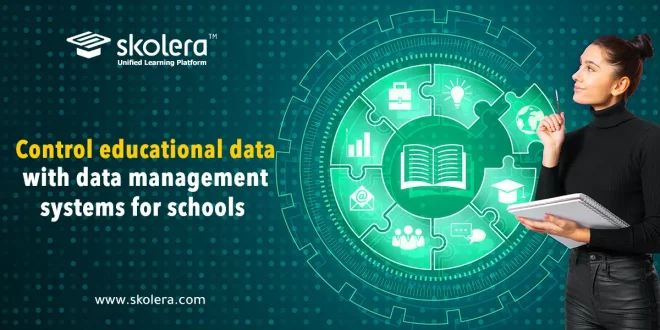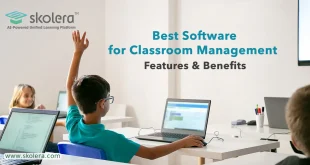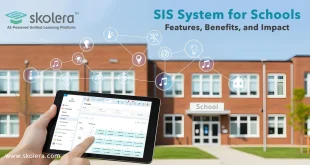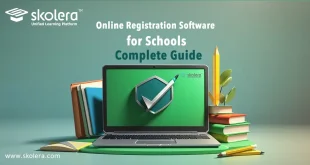In the era of rapid digital transformation we are living in, it has become necessary for educational institutions to find solutions to organize all the daily administrative tasks they perform. Data management systems for schools are among the most important digital systems that help educational institutions organize, store, and analyze data accurately and easily. The system provides educational services that help them keep track of all administrative tasks, which saves time and effort, reduces human error, and improves the quality of education.
Table of Contents
What are data management systems for schools?
Data management systems are designed specifically for storing and managing administrative data for educational institutions. They include modules such as student data, grade tracking, attendance and absence monitoring, student financial affairs, and class schedules. The system relies on a centralized relational database that stores and organizes all data in a connected and organized way. These systems provide a centralized database that educational institutions use to make accurate decisions. The system also helps eliminate the paperwork and manual tasks. The system also helps reduce financial expenses for educational institutions.
read more about: Skolera SMS – 25 Prominent Features of School ERP Software
Key features of data management systems for schools:
The school data management system includes multiple services, both administrative and academic, that help employees in educational institutions complete their work easily and smoothly while minimizing human error. Most of these services are:
- Central database: The school database management system relies on a central relational database that stores and organizes all data in a connected and organized way.
- Creating class schedules: The system helps educational institutions create class schedules in an organized way and this leads to accurate distribution of classes and prevents conflicts between classes, which ensures the educational process flows smoothly without any problems.
- Attendance and absence: The program helps the administration electronically record the daily attendance and absence of students, teachers, and all employees in the educational institution. The program also provides reports showing their percentages and sends these reports to the administration and parents in case of unexcused absences or repeated absences.
- Technical support: The system provides 24/7 technical support to all users in educational institutions to resolve any issues they face when using the system, and this allows educational institutions to operate smoothly and effectively.
- Financial account management: The school management system includes an integrated accounting program that can be used to perform all accounting operations related to the educational institution, prepare budgets, and accurately record invoices. The program provides reports to educational institutions on the fees owed by students and their payment dates.
- Communication between parents and teachers and administrators: The system helps the administration and teachers to stay in touch with parents about their children’s academic and behavioral performance, as well as all administrative matters related to students.
- Student Grades Section: This section is used to record all student grades in exams and periodic tests throughout the academic year. The records can be accessed anytime and anywhere by administrators, parents, and students.
- Preparation of reports and certificates: The system helps employees in educational institutions to create all administrative and academic reports and certificates for students easily.
read more about: School Management Excellence – 30 Digital Tools to Empower School Administrators with Skolera
Benefits of using data management systems for schools:
Under the trend of educational institutions toward digital education, school data management systems have become essential tools to ensure the smooth running of the educational process. The system is no longer merely an auxiliary program for educational institutions to complete their work, but has become an essential tool used by all educational institutions to perform all administrative and academic tasks:
- The system helps teachers focus on their educational tasks without being distracted by routine administrative tasks that take a lot of time and effort to finish, such as taking attendance and managing absences.
- Contributes to transparency: The system allows students and parents to view class schedules, grades, and all school activities anytime, anywhere, which builds trust between the administration, students, and parents.
- Accuracy of information provided by the system when making any decision: The system helps educational institutions by providing them with accurate information from the database, and this information helps educational institutions when making critical financial, administrative, or academic decisions.
- Monitoring student academic and behavioral performance: The system helps educational institutions to monitor student academic and behavioral performance through reports that highlight each student’s strengths and weaknesses. The system also provides educational plans for students who are struggling academically.
- Making the registration procedures easier for new students: The system helps staff and parents to register new students and create their files easily and smoothly.
- Data archiving: The system stores all data related to students, administrators, and employees, in addition to financial and administrative information related to educational institutions. The system archives this data securely to ensure confidentiality and protect it from theft and damage. The system also allows access to the data anytime and anywhere.
read more about: Transform Your Academic Year with Skolera
Components of students data management system:
The student data management system provides a range of important services that help staff in educational institutions perform their work more efficiently and accurately, while minimizing human errors as much as possible. Some of the main services include:
- Student registration: The system offers a service for registering new students and creating their electronic files, making the registration process easier for parents.
- Creating class schedules: The system helps educational institutions develop class schedules in an organized way, and this leads to accurate distribution of classes and prevents conflicts between classes, which ensures the educational process flows smoothly without any problems.
- Attendance and absence:The program helps the administration to record daily attendance and absence for students, teachers, and staff electronically. The program also creates reports with attendance rates and sends them to the administration and parents if there are unexcused or repeated absences.
- Technical support: The system provides 24/7 technical support to all users in educational institutions to resolve any issues they face when using the system, ensuring work keeps running smoothly.
- Financial account management: The student management program includes an integrated accounting program that can be used to complete all accounting operations related to the educational institution, prepare budgets, and accurately record invoices. The program provides reports to educational institutions on fees owed by students and their payment dates.
- Communication between parents and teachers, administrators: The system makes communication easy between the administration and teachers with parents regarding their children’s academic performance, behavior, and all administrative matters related to students.
- Student Grades Section: This section is used to record all student grades in exams and periodic tests throughout the academic year. Users can access it anytime, anywhere.
- Reporting and certificates: The system helps employees in educational institutions to create all administrative and academic reports and student certificates easily and effortlessly.
How data management systems help teachers?
Data management systems are important tools that help teachers carry out their daily work and improve the quality of education. Below are the most important benefits that this system offers to teachers:
- Saving time and reducing effort: These systems automate many routine tasks such as recording grades, preparing attendance sheets, and preparing reports to save time for teachers so they can focus more on teaching and developing students’ skills.
- Accurate monitoring of student performance: Teachers can view reports and graphs showing each student’s progress and identify their strengths and weaknesses, which helps them provide appropriate support to each student.
- Facilitating communication with parents: Teachers can use the system to send messages and notifications directly to parents, such as sharing homework and important notes, which enhances cooperation between the school and home.
- Preparing flexible study plans: Some systems provide tools that help teachers design easily adjustable study plans to suit the different needs of students and keep up with their progress.
Factors to consider when choosing the best lms for schools:
With the technological advances we are experiencing, we are no longer relying on learning management systems as a secondary option, but it has become an essential choice for developing the educational process. As a result of this progress, many different systems have appeared, each of which has its own features. It has become necessary for educational institutions to choose the most suitable system based on their needs. The most important tips are:
- Easy to use: When choosing a system, it is important to ensure that the user interface is clear and organized for all parties, whether for administrative staff, teachers, or parents, and that it allows users to navigate between the system’s basic functions easily and without facing any difficulties.
- Admin and teacher involvement in system selection: Educational institutions should involve the administrators and teachers in system selection. This is important for picking the right system for both teachers and administrators. They can do this by letting teachers and administrators try out different systems and pick the one that’s right for them, and by doing surveys to find out which system is best.
- Technical support: When choosing a system, we must make sure it has 24/7 technical support to fix any technical issues.
- Protection systems: When choosing a system, we must consider the availability of strong protection systems to prevent cyber attacks and protect the educational institution’s information. The system must implement advanced security standards such as encryption (SSL/TLS), multi-factor authentication, and role-based access controls (RBAC). This is to make sure it’s in line with data protection standards like GDPR and FERPA.
- Focus on the features of the system rather than its cost: When choosing a system, we should consider the features it offers and how they fit the needs of the educational institution, rather than just focusing on the cost, because this can lead to the system failing to do what it’s supposed to do.
Challenges of managing education data in schools:
The data management system provides great benefits to educational institutions, but there are many challenges and difficulties that educational institutions may face when implementing the system. The most important of these challenges are:
- Implementation and maintenance costs: Purchasing data management system licenses or subscribing to cloud services requires a high budget at the beginning of the system’s implementation in educational institutions and Educational institutions are required to equip themselves with a strong technological infrastructure, such as purchasing computers and a strong internet network,which requires educational institutions to allocate a lot of financial resources to ensure the system operates efficiently. Costs also increase with regular maintenance and continuous updates to the system to ensure it works normally.
- Resistance to change from users: Some employees in the administration and teachers may resist the idea of switching from a paper-based system to a modern digital system, as a result of employees’ and teachers’ fear of difficulty in using the system or anxiety about losing control over data, which affects the implementation of the system in educational institutions.
- Training requirements: Administrators and teachers in educational institutions need specialized training to learn how to use the system. Some complicated systems require teachers and administrators to spend more time training to understand the user interface and learn all the system’s functions, which slows down the implementation of the system in the educational institution.
- Data privacy issues: Storing all student administrative and academic information in the cloud requires educational institutions to make sure they’re following security standards like encryption (SSL/TLS) and role-based access controls (RBAC), and systems need to be compatible with data protection standards like GDPR and FERPA. In addition, the system must support different cloud deployment models (SaaS, PaaS, IaaS) while making sure it’s compliant with cloud security standards like ISO 27001 and SOC 2 to protect data and keep it private. Therefore, when educational institutions implement the system, they must prepare a detailed study that includes costs, training requirements, and an awareness plan for employees and teachers about the importance of the system. In addition, educational institutions must establish clear security policies to protect their data when implementing the system.
How Skolera can empower your school?
The Skolera system is the most important e-learning management system in Arab countries and the Middle East. Skolera combines an ERP school management system and an LMS learning management system in a single platform. This is a major advantage that sets Skolera apart from other systems. It makes it easier for educational institutions to use a single system that manages both administrative and academic aspects without the need to use more than one system. The ERP school management system is a student records management system handling all administrative work in educational institutions, such as organizing student data, issuing behavioral reports, creating study schedules, and storing students’ personal and educational files in a centralized school management database. The Learning Management System (LMS) is a system used to manage all educational work in the institution. It helps teachers create academic content and develop educational plans, track student attendance and absences, and set assignments and tests to evaluate them academically. The system also makes it easier for parents to communicate with teachers and department heads, individually or as a group. The Skolera system uses technology to provide accurate reports that help management make important decisions. Some of the system’s features include:
Administrative Features:
- Student Affairs: The Skolera system can create personal files for each student, which include all their personal information, the class they belong to, and the type of education they are following, whether it is the American or British system. The system also allows for easy editing of student data when they move from one grade to another or from one educational stage to another. The system also provides a service for managing student financial information, allowing users to record student school expenses and installment dates, and issue reminders to parents about installment payment deadlines.
- Finance: The Skolera system has an accounting program that lets admins do all the accounting work for the school, record invoices, make budgets, and keep track of all the expenses over the year. The system also supports the feature of issuing financial reports that show the financial status of the educational institution and clarify the institution’s debts, which helps management by providing them with sufficient information when making crucial financial decisions.
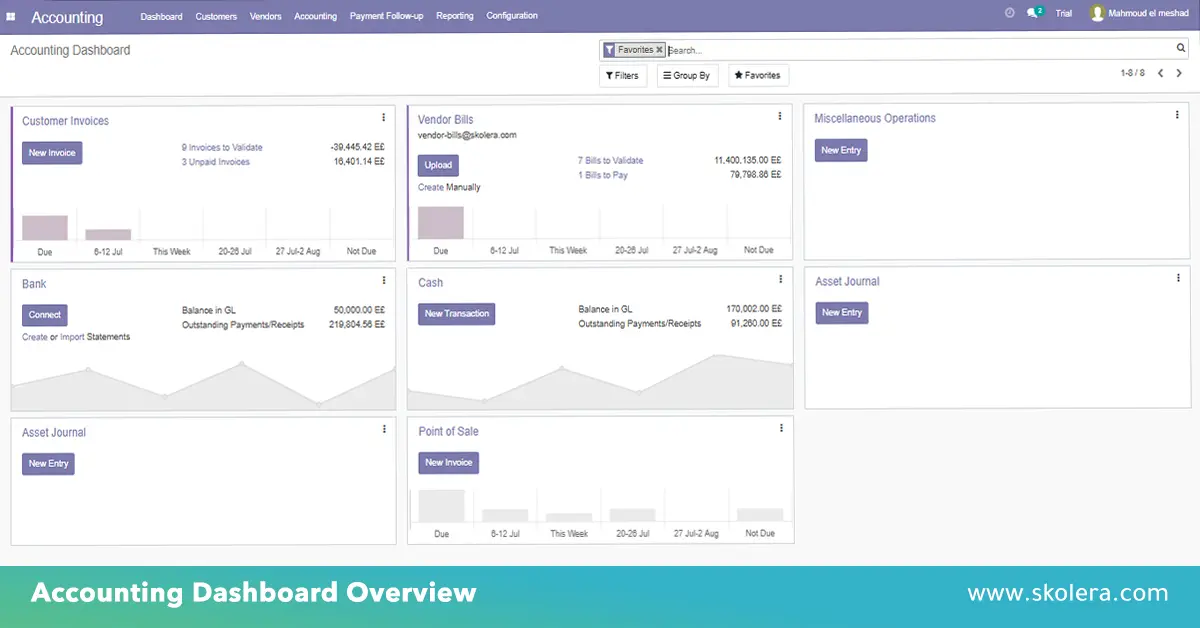
- Human Resources: The system includes a human resources module that allows you to record all employee data and track attendance and absence. The system also has the advantage of linking it to a fingerprint device to automatically record attendance and absences, which saves time and effort for educational institutions in tracking them. In addition, the system helps administrators to generate employee salaries accurately without human error.
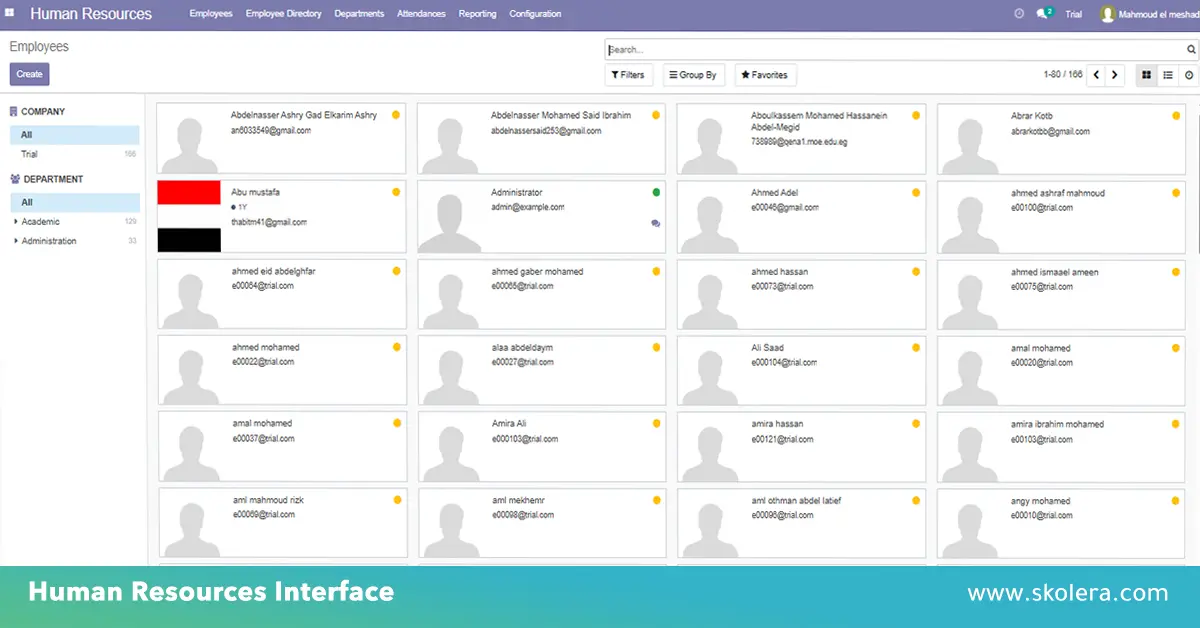
- Transportation: The Skolera system provides an integrated system for managing all buses owned by educational institutions and their schedules. The system also displays all student fees and payment dates.
- Cafeteria Management: One of the advantages offered by the system in the cafeteria module is that it helps management to organize daily buying and selling operations for the cafeteria and calculate the balance of goods. The system also offers the advantage of linking student purchases to their parents’ accounts and accurately tracking inventory, all of which is done automatically.
- Warehouse management: The system contains a module specialized in managing the educational institution’s warehouses, where the system helps to accurately organize sales and purchases. The system also provides a feature for tracking the assets assigned to employees in educational institutions to make sure the institution’s assets are kept safe.
- Public Relations: The system offers an easy way to apply online registration for new students to help parents with the registration process. It also supports tracking parent feedback through customer service to improve the quality of services provided.
Academic Features in Skolera:
- Easy-to-use interface: Skolera software is easy to use and has a simple interface. The interface shows the main functions of the system clearly, and Skolera supports three languages: Arabic, English, and French. In addition, the user interface settings can be changed to light, dark, or any other color according to each user’s preferences.
- Creating educational content: The Skolera system helps teachers create educational content, whether it is text, audio, or video, with the ability to save it in the cloud to protect the content from damage and access it anytime, anywhere.
- Creating educational plans: The system helps teachers create educational plans for courses, which saves them a lot of time in achieving educational goals. These plans serve as a reference for teachers to review their performance and can be easily modified in future lessons.
- Creating assignments and tests: The system helps teachers create assignments and tests electronically, which helps to ensure a fair assessment of students.
- Question bank: The question bank is one of the important tools in the Skolera system, as it is used to make it easier to create assignments and tests. The question bank is a database containing seven types of questions that are corrected electronically, except for essay questions, which are corrected by the teacher, to make sure students are graded fairly.
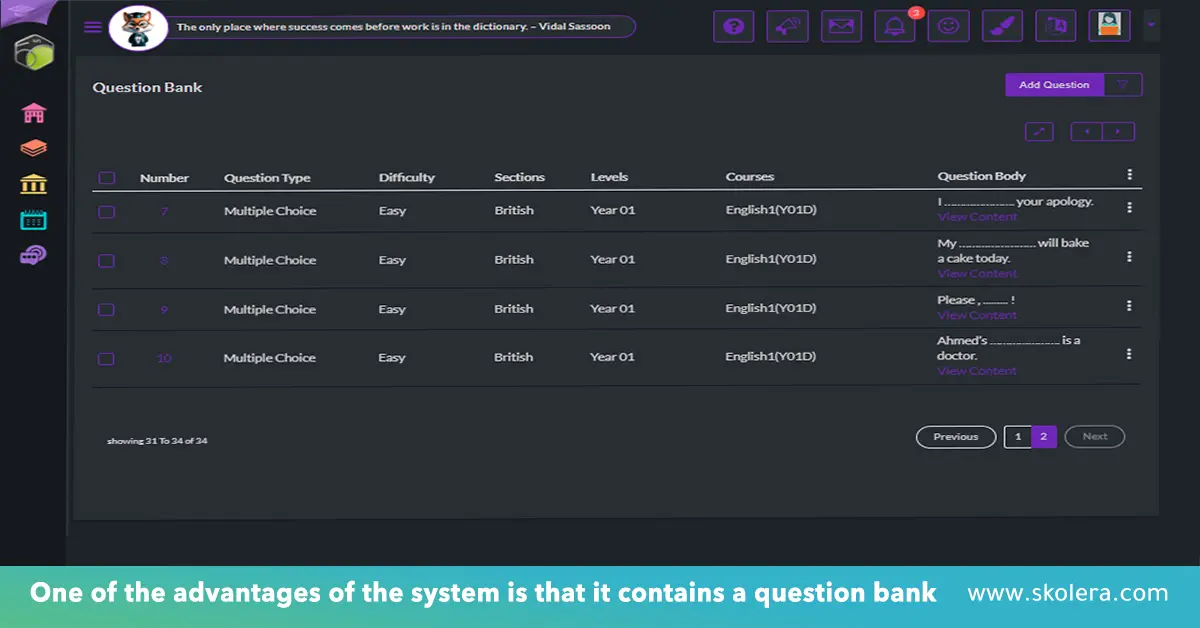
- Calendar feature: The system includes a calendar service for all users, where they can record their planned activities and tasks for the week. It also displays events and activities to users.
- Digital library: There is a digital library in the system where all users can upload up to five files at a time, with no maximum limit on the number of files uploaded.
- Badges feature: This is a tool in the Skolera system, where the administration and teachers give them to students to encourage them and show appreciation for their achievements. Badges are considered a motivational tool for students to compete with each other.
- Photo gallery: The Skolera system provides a photo gallery service that enables teachers and administrators to upload photos of activities and events on a single platform to be viewed by students and parents.
- Communication between students, teachers, and parents: The system provides a service for posting messages between teachers and students, which helps them share ideas and prepare for the next lesson. The system also helps teachers communicate with students and parents, either individually or collectively.
Why is Skolera the best school management software?
Skolera is one of the best school management systems because it provides an integrated platform that combines administrative and academic features in one system. Thanks to the simple interface and powerful features, Skolera helps schools manage all their daily operations easily and efficiently. Here are the main reasons why Skolera stands out:
- Comprehensive academic management: It helps teachers plan lessons, develop educational content, create assignments and exams, grade tests electronically, and track student performance, which supports the quality of education.
- Helps with administrative tasks: The system helps admins track attendance, manage financial, and generate reports. Skolera takes care of routine tasks and reduces manual errors.
- Effective communication tools: The system helps teachers, students, and parents stay in touch through messages, notifications, and reports, which increases interaction.
- Easy to use: Skolera has a simple interface for all users, including administrators, teachers, students, and parents, without the need for complicated training to use the system.
- High security: The system follows international data protection standards and supports cloud-based operations, which makes it suitable for educational institutions. It applies advanced security standards such as encryption (SSL/TLS), multi-factor authentication, and role-based access controls (RBAC). Which are compliant with data protection standards such as GDPR and FERPA. This complies with data protection standards such as GDPR and FERPA.
FAQ:-
What does the school management system do?
A school management system is a system used to manage all administrative and academic processes on a single platform in an organized and electronic way, and it aims to make the daily work of administrators, teachers, parents, and students easier. Examples: student registration, creating academic content, preparing class schedules, tracking attendance and absences, managing the institution’s financial transactions, managing personnel affairs, and creating and grading tests and assignments electronically.
Does the school management system work for all types of schools?
Yes, the school management system is suitable for all types of schools, but its effectiveness depends on the flexibility of the system and its ability to be customized to suit the needs of each school.
What is the best school management software?
There is no single best school management software overall, because choosing the most suitable software depends on the school’s needs, size, type of education, and budget. However, there are a number of internationally and regionally popular systems. Each of them has different advantages:
- Skolera
- OpenSIS
- PowerSchool
- Classera
 Skolera LMS Blog Educational Technology Articles and News
Skolera LMS Blog Educational Technology Articles and News

